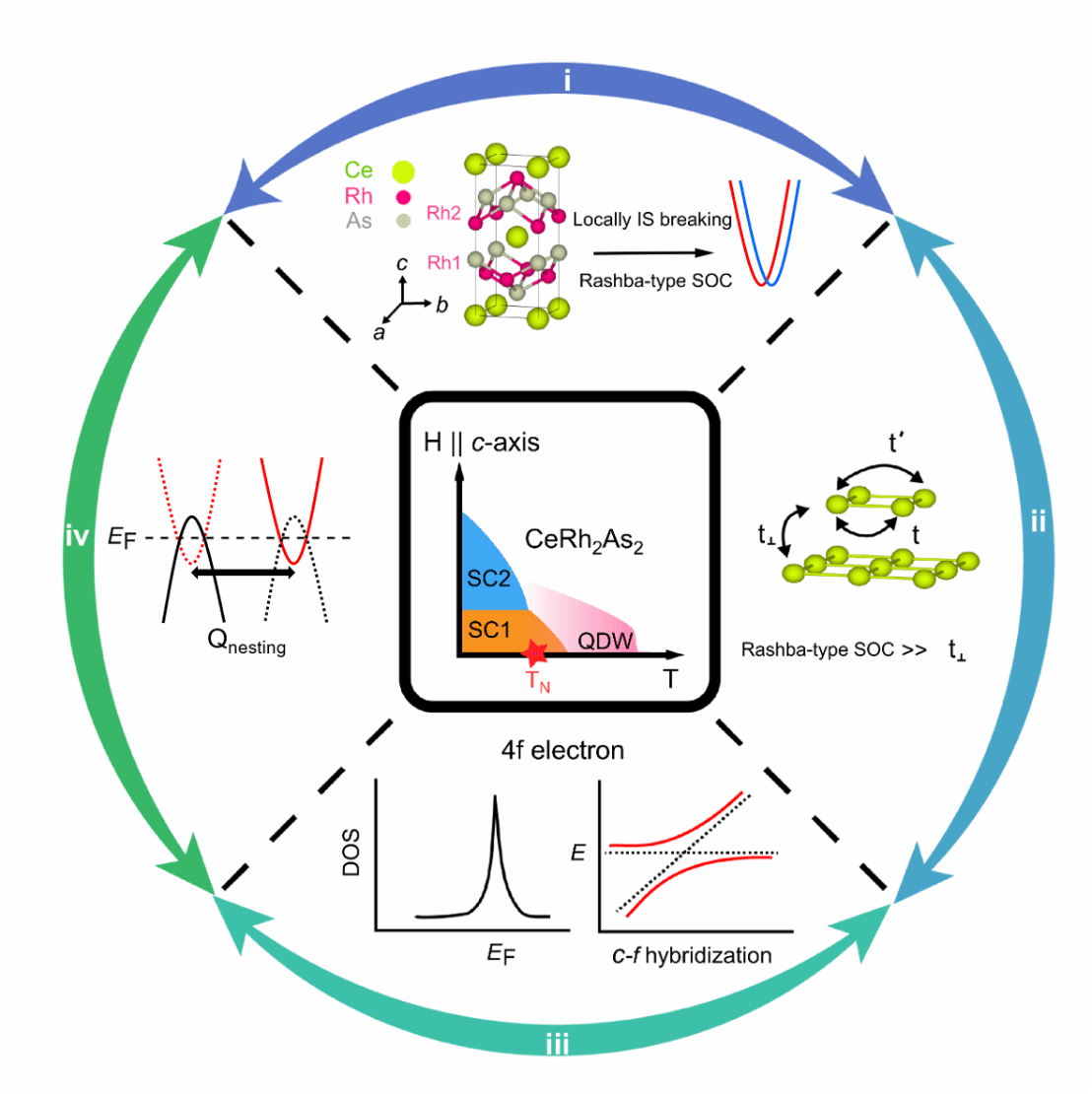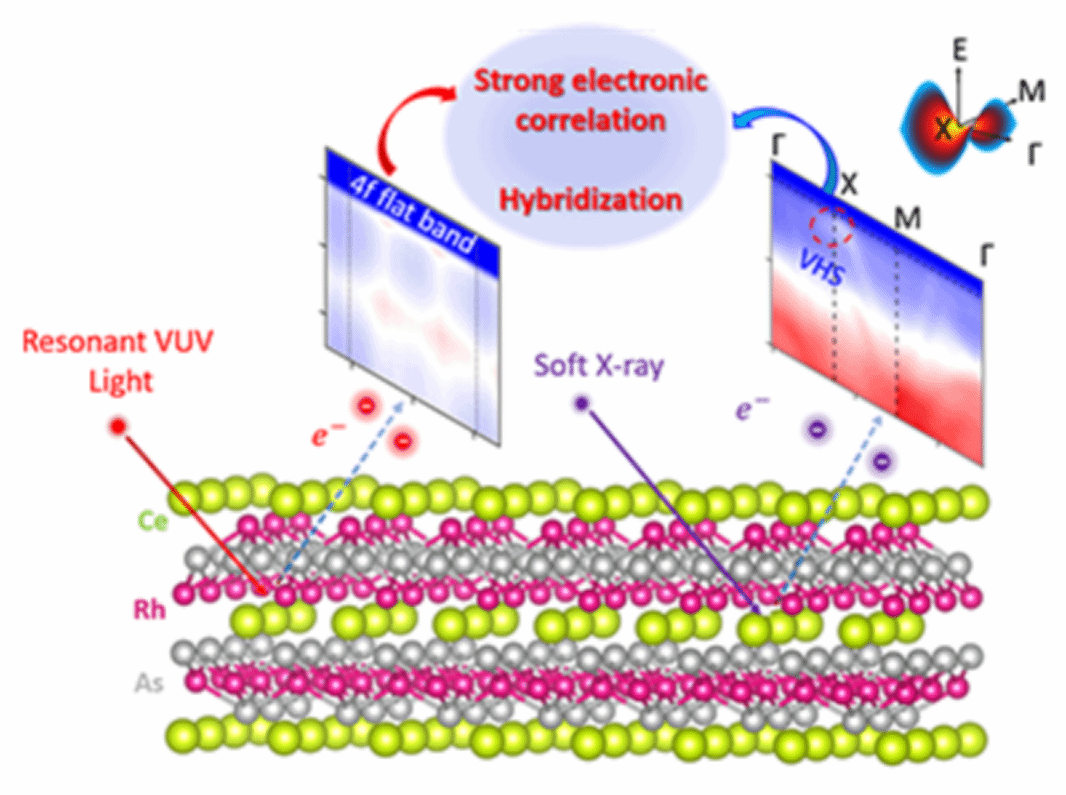搜索


Most known superconductors possess crystal structures with symmetry centers that satisfy spatial inversion symmetry. Consequently, their superconducting electron pairing wave functions can only be either spin singlets with even parity or spin triplets with odd parity. A minority of superconductors lack inversion symmetry centers. Their asymmetric crystal potential generates antisymmetric spin-orbit coupling, splitting spin-degenerate energy levels and forming hybrid spin singlets and triplets. In 2012, theoretical physicists proposed a model combining these two superconducting characteristics to achieve parity transition in superconducting pairing waves [1]. specifically, for a weakly coupled interlayer system that globally preserves spatial inversion symmetry, the upper and lower layers with locally broken inversion symmetry can satisfy the overall spatial inversion symmetry while inducing spin singlet-triplet mixing by generating Rashba spin-orbit coupling with opposite signs. Due to the differing magnetic field responses of the two superconducting pairing states—spin singlets being more susceptible to magnetic field suppression—a singular phenomenon occurs: a superconducting pairing phase transition from spin singlet to spin triplet can occur under magnetic fields.
In 2021, S. Khim et al. discovered this magnetic field-induced superconducting pairing parity transition in the cerium-based heavy fermion material CeRh₂As₂ [2], accompanied by rich physical properties including heavy fermion effects, quadrupole density waves [3], and antiferromagnetic ordering [4] (Figure 1). Compared to other materials with similar crystal structures but lacking such phase diagrams (e.g., LaRh₂As₂), the locally symmetry-broken crystal structure and f electrons in CeRh₂As₂ play a crucial role in these novel properties [5]. The electronic structure near the Fermi level is key to understanding the material's properties and mechanisms, yet information on the electronic structure of CeRh₂As₂ has been lacking.
Recently, a collaborative effort led by Researcher Huang Yaobo from the Shanghai Advanced Research Institute of the Chinese Academy of Sciences, Associate Professor Lü Baiqing from the Li Zhengdao Institute & School of Physics and Astronomy & Zhangjiang Advanced Research Institute at Shanghai Jiao Tong University, Dr. Wang Le from Southern University of Science and Technology, and Professor Yanase's team at Kyoto University, Japan, guided by Shanghai Institute of Applied Physics & the Institute of Physics, Chinese Academy of Sciences, and the Li Zhengdao Institute, jointly supervised by Dr. Chen Xuezhi and Dr. Zhang Renjie, along with Dr. Jun Ishizuka from Niigata University, Japan. They employed angle-resolved photoemission spectroscopy (ARPES) at the “Dreamline” and BL03U beamlines of the Shanghai Synchrotron Radiation Facility, combined with density functional theory calculations, to conduct a systematic electronic structure study of CeRh₂As₂. Through soft X-ray ARPES, they successfully resolved the three-dimensional band structure of CeRh₂As₂, revealing the quasi-two-dimensional nature of the bulk electronic structure and a flat band near the Fermi surface originating from f electrons (Figure 2). Simultaneously, they observed a crystal symmetry-protected quadruple-degenerate van Hove singularity (i.e., an extremum or saddle point in the band structure) at the X point in the Brillouin zone. More significantly, this study marks the first observation of coexisting van Hove singularities (VHS) near the Fermi level and f-electron flat bands in a heavy-fermion material. In correlated electron systems, these VHS and f-electron flat bands play crucial roles in driving superconductivity and other coexisting or competing orders. However, their coexistence near the Fermi level had not previously been observed in a single material system. The simultaneous presence of these two electronic structural features in CeRh₂As₂ enhances the material's electronic correlations and may be responsible for its novel two-phase superconductivity.
This work not only provides key spectroscopic evidence for understanding novel properties in CeRh₂As₂, such as multiple superconducting phases, heavy-fermion effects, and electric quadrupole charge density waves, but also offers insights into exploring new physics arising from the hybridization of two correlated electronic structures: the von Hof singularity and the flat band. The findings were recently published in Physical Review X 14, 021048 (2024). Chen Xuezhi, Wang Le, Jun Ishizuka, and Zhang Renjie are co-first authors, with Huang Yaobo, Lü Baiqing, and Yanase as corresponding authors. This work received support from the Ministry of Science and Technology, the National Natural Science Foundation of China, and the Shanghai Municipal Government.

Figure 1 Phase diagram of CeRh₂As₂ at H–T. i, Crystal structure of CeRh₂As₂. ii, Schematic of the two-layer Rashba-Hubbard model. iii, Enormous density of states near the Fermi level for 4f electrons (left panel), schematic of 4f electron hybridization with the conduction band based on the periodic Anderson model (right panel). iv, Schematic of band nesting.

Figure 2 Schematic of the 4f electron flat band and VHS hybridization in CeRh₂As₂.
Paper link:
https://journals.aps.org/prx/abstract/10.1103/PhysRevX.14.021048
Refences:
[1] Physical review B 86, 134514 (2012).
[2] Science 373, 1012-1016 (2021).
[3] Physical review X 12, 011023 (2022).
[4] Physical review letters 128, 057002 (2022).
[5] Physical review B 106, 014506 (2022).
Author:
Lü Baiqing Team
Contributing Institution:
Center for Ultrafast Science






 Address:No.1308 Keyuan Road, Pudong District, Shanghai
Address:No.1308 Keyuan Road, Pudong District, Shanghai Phone:86-21-54740000
Phone:86-21-54740000 E-mail:zias@sjtu.edu.cn
E-mail:zias@sjtu.edu.cn